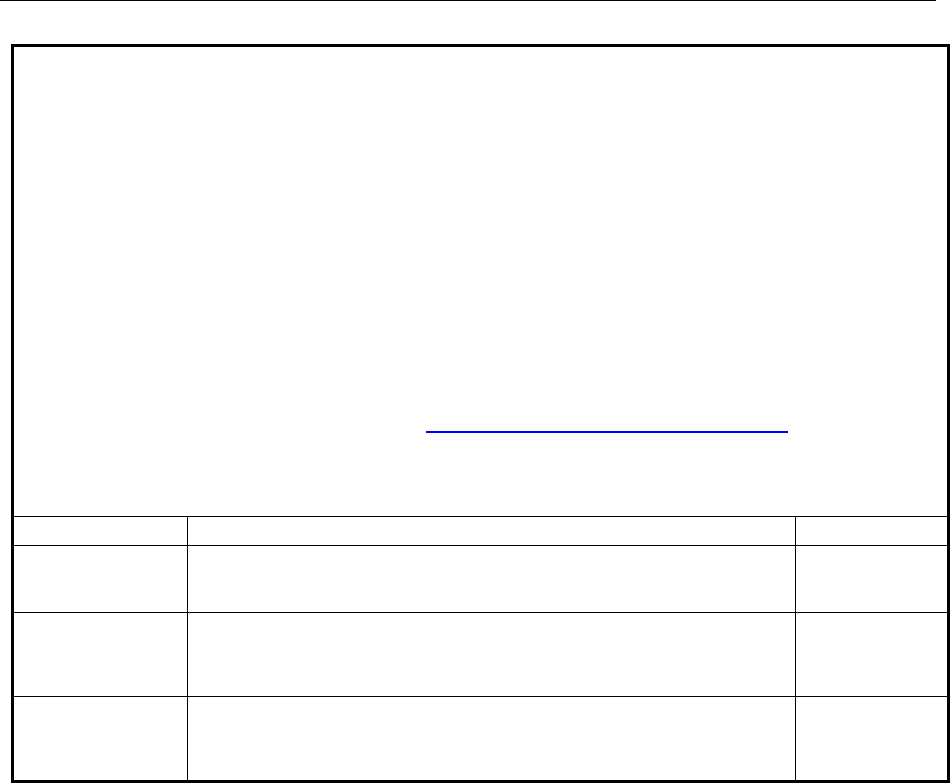
2BDoD 7000.14-R Financial Management Regulation Volume 10, Chapter 10
* July 2023
10-1
VOLUME 10, CHAPTER 10: “PAYMENT VOUCHERS – SPECIAL
APPLICATIONS”
SUMMARY OF MAJOR CHANGES
Changes are identified in this table and also denoted by blue font.
Substantive revisions are denoted by an asterisk (*) symbol preceding the section,
paragraph, table, or figure that includes the revision.
Unless otherwise noted, chapters referenced are contained in this volume.
Hyperlinks are denoted by bold, italic, blue and underlined font.
The previous version dated July 2021 is archived.
PARAGRAPH
EXPLANATION OF CHANGE/REVISION
PURPOSE
All
Updated hyperlinks and formatting to comply with current
administrative instructions.
Revision
2.2.2.
Added a reference to Volume 5, Chapter 11, paragraph 4.4
concerning monthly cutoff dates/times for
Intra-Governmental Payment and Collection processing.
Revision
5.2.1.1.
Revised the reference and hyperlink for progress payment
limitations from Title 10, United States Code (U.S.C.),
section 2307 (which was repealed) to 10 U.S.C. § 3804.
Revision

2BDoD 7000.14-R Financial Management Regulation Volume 10, Chapter 10
* July 2023
10-2
Table of Contents
VOLUME 10, CHAPTER 10: “PAYMENT VOUCHERS – SPECIAL APPLICATIONS” ....... 1
1.0 GENERAL ..................................................................................................................... 3
1.1 Overview .............................................................................................................. 3
1.2 Purpose ............................................................................................................... 3
1.3 Authoritative Guidance ........................................................................................ 3
2.0 INTRAGOVERNMENTAL PAYMENTS .................................................................... 3
2.1 Overview .............................................................................................................. 3
2.2 Billing Processes .................................................................................................. 4
2.3 Completion of Intragovernmental Reimbursement and Transfer Vouchers .......... 5
2.4 Constructive Delivery or Drop from Inventory ................................................... 6
2.5 Payments to Defense Working Capital Funds (DWCFs) .................................... 8
2.6 General Services Administration (GSA) ............................................................. 8
2.7 Payments to the Government Printing Office (GPO), Library of Congress, and
Government Corporations .................................................................................. 11
3.0 PARTIAL PAYMENTS .............................................................................................. 11
3.1 Invoicing and Tracking ...................................................................................... 12
3.2 Discounts Offered .............................................................................................. 12
3.3 Ordering Agreements and Blanket Delivery Orders .......................................... 12
4.0 CONTRACT PAYMENT ALLOCATIONS ............................................................... 12
4.1 Overview ............................................................................................................ 12
4.2 Application ......................................................................................................... 12
5.0 CONTRACT FINANCING PAYMENTS ................................................................... 13
5.1 Overview ............................................................................................................ 13
5.2 Progress Payments ............................................................................................. 14
5.3 Performance-Based Payments ........................................................................... 18
5.4 Advance Payments for Non-commercial Items ................................................. 19
6.0 COST-REIMBURSEMENT-TYPE CONTRACTS .................................................... 21
6.1 Recording of Payments ...................................................................................... 21
6.2 Authority to Review and Approve Vouchers ..................................................... 21
6.3 Invoice Submission ............................................................................................ 21
6.4 Special Provisions for Foreign Military Sales (FMS) - Funded Contracts ........ 22
7.0 FAST PAYMENT ........................................................................................................ 22
7.1 Payment Timelines and Requirements ............................................................... 22
7.2 Controls ............................................................................................................. 22
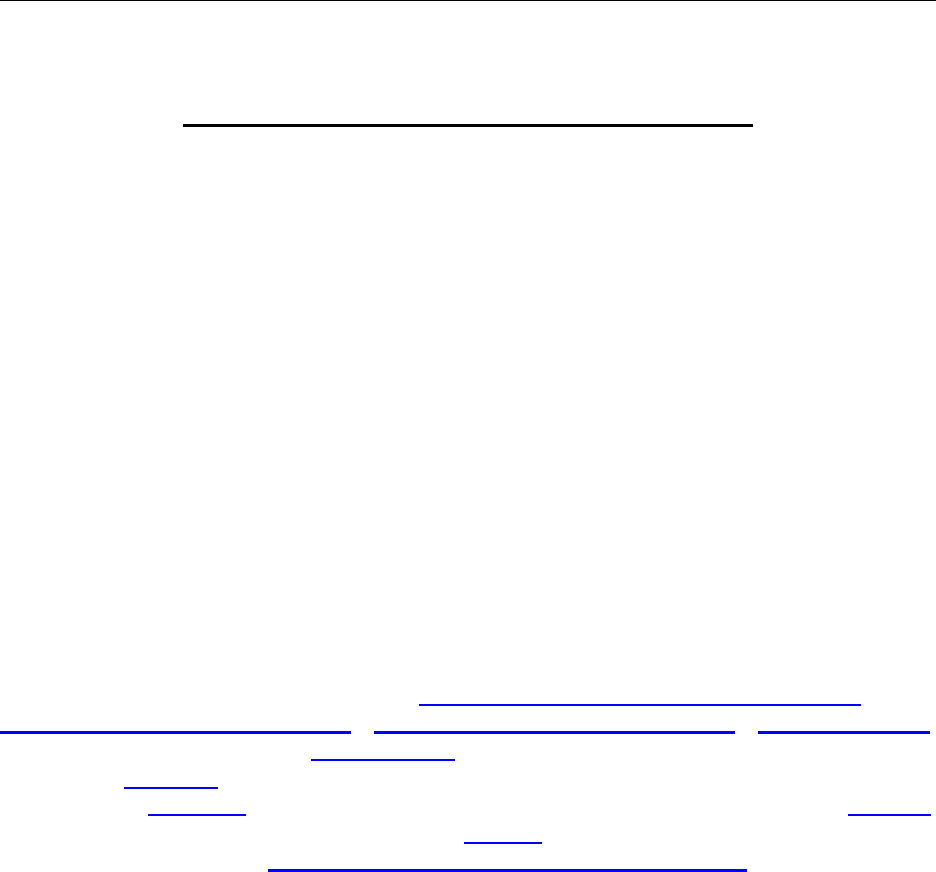
2BDoD 7000.14-R Financial Management Regulation Volume 10, Chapter 10
* July 2023
10-3
CHAPTER 10
PAYMENT VOUCHERS – SPECIAL APPLICATIONS
1.0 GENERAL
1.1 Overview
The DoD uses payment vouchers to document the payment of billings for services and
supplies. Payment voucher processing described in this chapter relates to vouchers with unique
entitlement or execution features. This chapter includes policy for executing intragovernmental
payments and entitling partial payments, contract financing, advance payments, fast payments, and
payments against cost-reimbursement contracts. Disbursement processing requirements are
described in Volume 5, Chapter 9.
1.2 Purpose
This chapter prescribes the DoD policy for handling payment vouchers with special
requirements in accordance with the laws and regulations cited herein.
1.3 Authoritative Guidance
This chapter establishes policies based on the statutory and regulatory requirements spelled
out in specific sections of Title 41, Code of Federal Regulations (CFR), the
Treasury Financial Manual (TFM), Title 31, United States Code (U.S.C.), Title 10, U.S.C.,
Federal Acquisition Regulation (FAR) Part 32, and the Defense Federal Acquisition Regulation
Supplement (DFARS) referenced throughout the chapter. Standard processing forms include the
Standard Form (SF) 1080, Voucher for Transfers Between Appropriations and/or Funds, SF 1081,
Voucher and Schedule of Withdrawals and Credits, SF 1034, Public Voucher for Purchases and Services
Other Than Personal, and the General Services Administration’s (GSA) Form 789, Statement, Voucher
and Schedule of Withdrawals and Credits.
2.0 INTRAGOVERNMENTAL PAYMENTS
2.1 Overview
Intragovernmental payments result from transactions between federal entities for sales,
services, or transfers between such entities. See Volume 4, Chapter 3, section 5.0 and Chapter 9,
paragraph 2.6 for intragovernmental accounting policy. For DoD, these transactions can be:
2.1.1. Between DoD and Non-DoD entities,
2.1.2. Between DoD Components, or
2.1.3. Within a DoD Component.

2BDoD 7000.14-R Financial Management Regulation Volume 10, Chapter 10
* July 2023
10-4
2.2 Billing Processes
2.2.1. Interfund Billings. Intragovernmental transactions between or within DoD
Components for the purchase of goods will be processed through the interfund billing system when
initiated and supported by the supply and accounting systems of both trading partners (also see
Volume 4, Chapter 3, section 5.0 for additional policy on intragovernmental receivables). As
prescribed by the Defense Logistics Management Standards (DLMS), Defense Logistics Manual
(DLM) 4000.25, Volume 4, Chapter 5, (C5.1.2), Interfund Billing System Procedures, the GSA,
Federal Aviation Administration, and the National Oceanic and Atmospheric Administration are
authorized federal agencies that may also bill DoD through the interfund billing system for goods
purchased. The interfund billing system allows suppliers to reimburse themselves at the time of
the billing from appropriations designated by the customer. The supplier forwards an automated
billing to the billed office and reports to the U.S. Department of the Treasury (Treasury) a
reimbursement of the supplier’s funds with an offsetting charge to the customer’s funds. Interfund
bills, therefore, serve as both a billing and a notice to the customer that its funds have been charged
and the bill has been paid. Only the billing office or the Central Accounts Office is authorized to
adjust, or otherwise reverse, reimbursements reported to the Treasury on behalf of the billing
office. See the DLM 4000.25, Volume 4 for detailed interfund billing system procedures.
* 2.2.2. Non-Interfund Billings. Intragovernmental transactions between DoD Components
that are not initiated and supported by the supply and accounting systems of both trading partners,
and are unable to be processed through the interfund billing system (described in subparagraph
2.2.1), are classified as non-interfund transactions. This includes intragovernmental transactions
between a DoD Component and a non-DoD entity, which are not authorized for interfund billing
in accordance with the DLM 4000.25, Volume 4, Chapter 5. The TFM, Volume 1, Part 2, Chapter
4700, Appendix 8, section 2.6, provides policy and guidance on the use of the Intragovernmental
Payment and Collection (IPAC) system by federal entities, including the DoD, to electronically bill
and pay for non-interfund intragovernmental transactions. Appendix 8, section 1 of the referenced
TFM also provides guidance and information related to the development, use of, and required
implementation dates of G-Invoicing as the platform for creating and managing intragovernmental
transactions. G-Invoicing is not an accounting system nor a procurement system; instead, it serves
as a gateway for federal entities to agree upon the funding terms and the accounting treatment of
their reimbursable activity, and exchange that data with one another for consistent financial
reporting. IPAC will continue to operate as the application for the settlement of funds between
federal entities, even in a G-Invoicing environment, per the TFM. The IPAC system communicates
to the Treasury and the trading partner agency that the online billing and payment for services and
supplies has occurred. Refer to TFM, Volume 1, Part 2, Chapter 4700, Appendix 8 for additional
information on G-Invoicing and IPAC respectively. See Volume 5, Chapter 11 for disbursing policy
related to IPAC processes and Volume 4, Chapter 3 for accounting policy related to non-interfund
receivables policy. Volume 5, Chapter 11, paragraph 4.4 provides policy concerning monthly cutoff
dates for IPAC processing.
2.2.3. Advance Payments. Unless the DoD Component is specifically authorized by law,
legislative action, or Presidential authorization, funds are not to be advanced to non-DoD federal
entities, or be used to pay for advance billings without the receipt of goods or services. The
constructive delivery and drop from inventory methods described in paragraph 2.4 are exceptions

2BDoD 7000.14-R Financial Management Regulation Volume 10, Chapter 10
* July 2023
10-5
to this prohibition of advances prior to receipt. Volume 11A, Chapter 3 contains additional policy
pertaining to advances to non-DoD entities via Economy Act Orders. Also see Volume 4,
Chapter 5, and TFM Volume 1, Part 2, Chapter 4700, Appendix 8, section 2.7 for general policy
concerning advance payments.
2.3 Completion of Intragovernmental Reimbursement and Transfer Vouchers
2.3.1. Vouchers. In accordance with DLM 4000.25, Volume 4, Chapter 2, C2.2.7, when an
activity is unable to utilize electronic data interchange methods, the SF 1080 is an authorized voucher
that may be used to entitle, execute, and support non-interfund intragovernmental payments. See
Volume 5, Chapter 9 for detailed guidance regarding disbursement vouchers for non-interfund
intragovernmental transactions.
2.3.1.1. SF 1080. The SF 1080 is used as support for bills to other DoD Components
and non-DoD federal agencies for non-interfund, intragovernmental transactions.
2.3.1.2. SF 1081. Components may also use the SF 1081 when a manual process
is required to generate interagency payments and collections between DoD and other agencies of
the U.S. Federal Government. In addition, the SF 1081 is used for correcting prior expenditure or
collection transactions, as well as for processing expenditure transactions not requiring payment by
check.
2.3.1.3. Valuation/Cost Conditions. The following conditions may apply when
using either the SF 1080 or SF 1081.
2.3.1.3.1. Surplus articles, for which payment is to be made, are listed on the
voucher or supporting documents at their appraised values. Surplus articles refer to any items
provided by the seller to the buyer over and above what was originally requested/agreed to.
2.3.1.3.2. Work and shop orders indicate the unit prices of articles or services
furnished, or the actual value of personal services, materials, or other direct charges and overhead.
When vouchers cover expenses related to the use of equipment, the following certification is placed
upon the itemized statement: “I hereby certify that the amount billed herein represents cost as
determined under 31 U.S.C. § 1535 and 31 U.S.C. § 1536.” In cases where the account is billed based
on unit costs (e.g., per hour, day, or mile) rather than by itemization of supplies and services, such
unit costs will include all expenses of operation and maintenance except depreciation. The billing
method should be identified in, and determined by, the purchase agreement between the entities.
2.3.1.3.3. The services of an employee performed for another federal
department or agency may be reimbursed to the providing agency if an agreement for reimbursement
was made before the rendering of such services. Copies of such agreements are attached to the
transfer voucher (i.e., SF 1080, 1081, or 1034) in support of the payment.
2.3.1.3.4. Articles issued from stock on hand, or stock due in, are listed on
the vouchers or supporting documents. The unit prices of such items are at the standard average
cost, or are computed on such basis as to ensure proper reimbursement to the agency.

2BDoD 7000.14-R Financial Management Regulation Volume 10, Chapter 10
* July 2023
10-6
Refer to Volume 4, Chapter 4, paragraph 4.3 for additional details concerning valuation
methodologies for inventory items.
2.3.1.4. GSA 789. The GSA 789 is an authorized payment voucher for purchases
from GSA (DLM 4000.25, Volume 4, Chapter 2, C2.2.7).
2.3.2. Billing Verification. As prescribed by Volume 5, Chapter 5, paragraph 5.1, Certifying
Officer Legislation requirements (31 U.S.C. § 3325 and 31 U.S.C. § 3528) do not apply to
intragovernmental payments.
2.3.2.1. The entitlement office examines intragovernmental payment vouchers and
supporting documentation to verify amounts, ensure required information is present, and validate
that any required certifications are present; such as that described in 2.3.1.3.2 for the use of
equipment. The entitlement office also verifies accessorial charge rates when levied by non-DoD
Government activities for issues, sales, and transfers of material, supplies, and equipment.
2.3.2.2. This verification must ensure that charges do not take into account recurring
reimbursement issues (sales) and non-reimbursable transfers of material to other DoD Components,
except for sales and transfers pursuant to the military assistance grant aid program and Foreign
Military Sales (FMS) programs. After the review and examination for propriety, the entitlement
office cites the accounting classification and verifies the voucher is ready for payment.
2.3.3. Receipt and Acceptance Documentation. Evidence of receipt and acceptance is
required to support all intragovernmental and interfund transactions. The accurate and timely
recording of receipts is critical to ensure financial statements are materially correct. DoD financial
reporting entities must develop and implement internal controls to ensure receipt and acceptance is
properly accomplished and documented to support all intragovernmental transactions. Refer to
Chapter 1 for additional details concerning internal control requirements of federal agencies. Refer
to Volume 4, Chapter 9 for additional details concerning receipt and acceptance requirements.
2.4 Constructive Delivery or Drop From Inventory
2.4.1. Overview. Components can place orders with another major organization within
DoD, or another Federal agency, for goods or services under the Economy Act, 31 U.S.C. § 1535.
Refer to Volume 11A, Chapter 3 for policy on Economy Act orders. Payments from the ordering
agency are made promptly upon the written request of the agency or unit filling the order. Payment
is made in advance or upon providing the goods or services ordered, for any part of the estimated or
actual cost as determined by the agency or unit filling the order. A bill submitted, or a request for
payment, is not subject to audit or certification in advance of payment. Adjustments of amounts paid
prior to receipt of the goods or services are made in accordance with prior agreement by appropriate
Component personnel on the basis of the actual cost of goods or services provided. DoD billings are
based on constructive delivery or drop from inventory as follows.
2.4.1.1. Constructive Delivery. Constructive delivery is the delivery of material by
the providing entity to a commercial carrier, freight forwarder, the U.S. or an international post
office, or customer at the point of production, storage, or test.
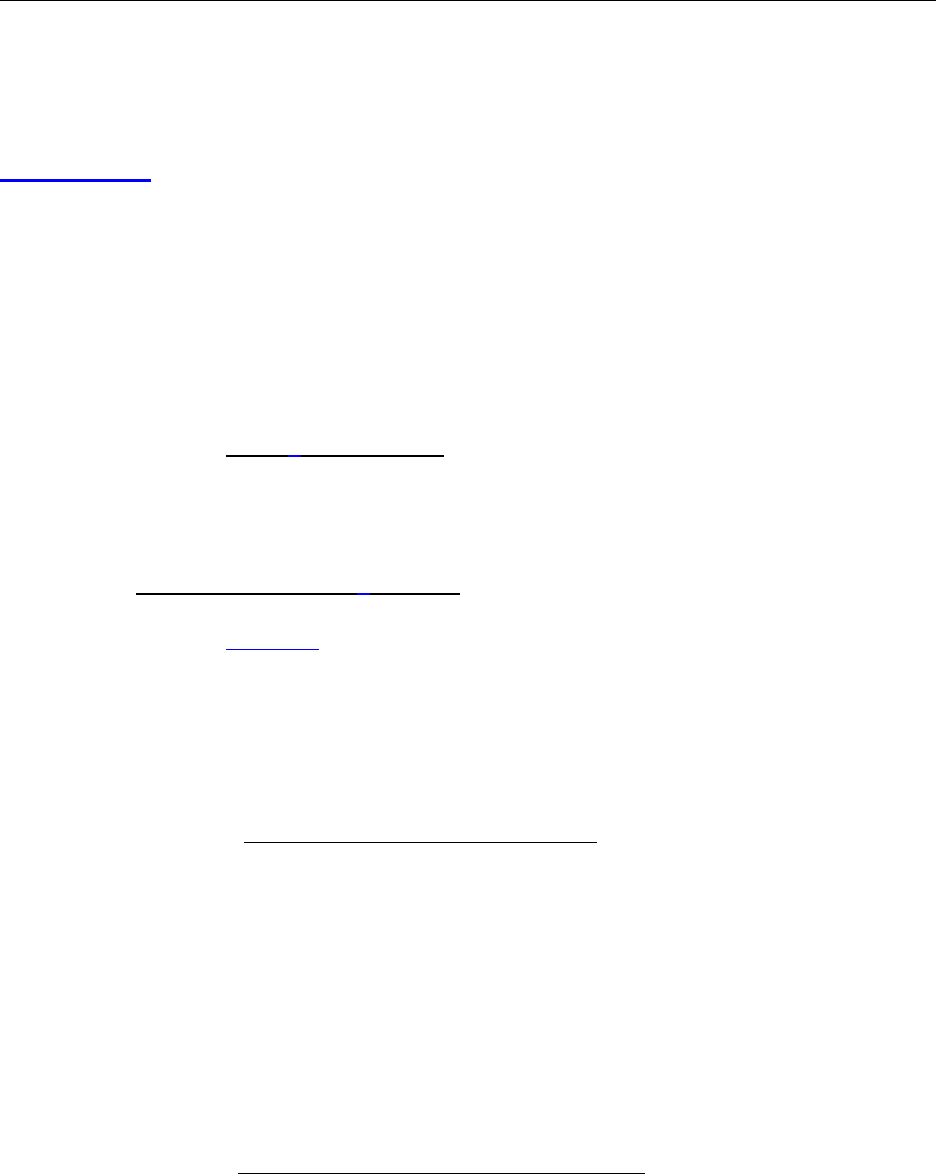
2BDoD 7000.14-R Financial Management Regulation Volume 10, Chapter 10
* July 2023
10-7
2.4.1.1.1. Delivery is evidenced by completed copies of shipping documents,
material shipment status of shipping documents, or a list of deliveries to a post office. Constructive
delivery also applies to billings for goods accepted by an authorized inspector of another DoD
Component providing direct shipment to the consignee. Such billings must be supported with a DoD
(DD) Form 250, Material Inspection and Receiving Report, or other authorized documents received
from the inspector showing shipment. Under constructive delivery, bills are issued when the carrier
accepts the goods for transport.
2.4.1.1.2. Payment under constructive delivery differs from the actual
delivery or drop from inventory concept. Constructive delivery bills are accepted and paid without
waiting for delivery of the goods to the final destination. However, Components must perform
follow-up procedures to ensure the goods have been received and accepted, and obtain the
documentation to support the receipt and acceptance for subsequent audit purposes.
2.4.1.2. Drop From Inventory. Drop from inventory is the reduction of the
quantitative inventory balance. Billing for shipments from stock must be billed at the standard price
in effect at the time the stock is dropped from inventory. Refer to Volume 11B, Chapter 15 for
pricing policy of inventory items.
2.4.2. Non-interfund Billings From DoD
2.4.2.1. Overview. Following a supply activity requisition, reimbursable sales of
material are billable after the material has been transferred using the drop from inventory method.
Billing will occur on the basis of the drop from inventory or performance of services. Sales of bulk
petroleum, oil, lubricants, and perishable subsistence, as well as FMS and military assistance grant
aid shipments, are noted exceptions to this billing policy. Refer to DLM 4000.25, Volume 4,
Chapter 2 for billing guidelines.
2.4.2.2. Responsibility of Supplying Activity. The supplying activity initiates a
request for payment for items supplied to the DoD. Billings must, at a minimum, be supported by
the following information: document order number, description of the article or services, delivery
or other performance date, quantity, and price. The document order number will normally be
satisfied by the requisition document number, and the description will normally be satisfied by the
National Stock Number. The delivery or performance date is the same date established in the
detailed billing record, as appropriate for the issue or service. The supplying activity notifies the
requisitioning activity of item substitutions and price or quantity changes. To facilitate the
resolution of billing or payment disputes involving bills, billing offices should also include
electronic contact information on the bill. Refer to DLM 4000.25, Volume 4, Chapter 2 for further
details regarding billing procedures.
2.4.2.3. Responsibility of Requisitioning Activity. The requisitioning activity
records the amounts and quantities of items approved for payment at the time of receipt and
acceptance of the delivered items/services. The requisitioning activity adjusts the billing for
unacceptable items or for items unfilled by the supplying activity and provides reimbursement for
the adjusted amount. The requisitioning and supplying activities determine subsequent disposition
of the unfilled items through mutual agreement.

2BDoD 7000.14-R Financial Management Regulation Volume 10, Chapter 10
* July 2023
10-8
2.4.2.4. Billing Adjustments for Short, Damaged, or Defective Shipments Within the
DoD. The requisitioning activity initiates action to obtain billing adjustments. When the DoD
Component shipping the items is responsible for an adjustment, a Supply Discrepancy Report (SDR)
(an electronic equivalent to the SF 364, Report of Discrepancy (ROD)), is prepared by the receiving
activity and submitted under DLMS procedures. The Transportation Management Office or
Transportation Office initiates the DD Form 361, Transportation Discrepancy Report (TDR), when
the shortage or damage is attributed to the commercial carriers. For procedural instructions regarding
these reports, see the Defense Transportation Regulation (DTR), Part II, Chapter 210 and
DLM 4000.25, Volume 2, Chapter 17.
2.4.2.5. Other Billing Adjustments or Allowances. The requisitioning activity is
responsible for initiating requests to the billing activity to grant adjustments or allowances that do
not arise from shortages, damages, or defects in shipments. These adjustment and allowance
requests are submitted via the SDR for discrepancies such as overages (to be retained by the
receiving activity), unacceptable substitutes, or erroneous material received. Approved requests are
applied as an adjustment or allowance to the customer account included in the billing document.
2.4.2.6. Billing and Credit for Material Diversions Using Military Standard
Requisitioning and Issue Procedures (MILSTRIP)/Military Standard Transaction Reporting and
Accounting Procedures. If the requisitioning activity cancels requisitions, then the requisitioning
activity is credited the amount billed, including accessorial charges. Accessorial costs represent
certain expenses incident to issues, sales, and transfers of materiel. Accessorial costs include costs
incurred for packing, crating, and handling; transportation; and port loading and unloading (See
Volume 11A, Chapter 1 for additional details on accessorial charges).
Refer to DLM 4000.25,
Volume 4, Chapter 2 for further details regarding MILSTRIP cancelation procedures. The alternate
consignee for material diverted is billed for the standard price and accessorial charges. If the Defense
Logistics Agency (DLA) places an order for direct shipment of non-stocked items and the
requisitioning activity cancels the order, then the requisitioning activity is billed via the SF 1080 for
contract termination costs arising from cancelation of the requisition. DLA notifies the “bill to”
activity cited in the canceled requisition of impending termination costs.
2.5 Payments to Defense Working Capital Funds (DWCFs)
Payment for services rendered by DWCF activities is based on the prescribed rates, tariffs,
and billing procedures. DWCF payments are made with the same policy as constructive delivery
and drop from inventory payments described in section 2.4.
2.6 General Services Administration (GSA)
The majority of GSA billing is accomplished via the interfund process utilizing the
Simplified Interagency Billing and Collection system. When the interfund process is not used, the
GSA Form 789 is used for purchases from GSA.
2.6.1. Non-interfund Billings (GSA)
2.6.1.1. GSA provides selected supplies, equipment, services, space,
communications, motor vehicle rental, and other miscellaneous items on a reimbursable basis. These

2BDoD 7000.14-R Financial Management Regulation Volume 10, Chapter 10
* July 2023
10-9
supplies and services are financed from revolving, management, or working capital funds, and
reimbursement from the Components is obtained through periodic billings and collections. Periodic
billings and collections allow GSA to operate these programs with a minimum amount of
appropriated funds.
2.6.1.2. The ordering activities receive bills from GSA biweekly, monthly, or
quarterly, after the fact, or in advance (e.g., rental payments) on the GSA billing forms. This will be
determined in the purchase agreement between the entities. As prescribed by DLM 4000.25,
Volume 4, Chapter 2, when activities are unable to use electronic methods, the SF 1080 or the GSA
789 may be used for billing. GSA is not required to certify such bills. Except for those bills that are
rendered in advance, bills are sent to the Components only after there is evidence of actual delivery
of material or services or after receipt of evidence of shipment (constructive delivery). GSA
furnishes bills and supporting documentation containing the data necessary to permit identification
of the requisition, purchase order, or other obligating documents. Components must perform
follow-up procedures to ensure the goods have been received and accepted, and obtain the
documentation to support the receipt and acceptance for subsequent audit purposes. GSA may
process requisitions of $1 or less without billing.
2.6.2. Adjustments. GSA adjusts bills for transportation-type discrepancies attributable to
the common carrier, when the difference in shipment is caused by the shipper (GSA), or results from
a lost or damaged parcel post shipment. See DLM 4000.25, Volume 4, Chapter 4 for additional
policy regarding requesting or processing billing adjustments or refunds.
2.6.2.1. For lost, damaged, or defective shipments, when the discrepancy is
attributable to the common carrier, the receiving activity prepares a TDR. The GSA processes these
claims within the Continental United States (CONUS), since they are designated on the Government
bill of lading to make payment of transportation charges to the common carrier.
2.6.2.2. When a discrepancy in shipment is either caused by the shipper (GSA) or
results from a lost or damaged parcel post shipment, the receiving activity prepares the SDR. The
receiving activity sends the SDR, under DLMS procedures, to the GSA National Customer Service
Center (NCSC). The NCSC will accept reports of discrepancies sent by mail or via e-mail at
2.6.2.3. Errors in GSA non-interfund billings, other than shipping errors, are
corrected by GSA based on an electronic request for billing adjustment, if possible, or a letter or
email from the billed office. The billed office sends the request for adjustment to the GSA NCSC,
including a copy of the bill and explanation of the error.
2.6.2.4. GSA processes the SDR or TDR, replies to the receiving activity, and when
applicable, sends an adjusted bill to the billed office. The GSA may also initiate communication
advising the billed office of erroneous billings and, when applicable, submit an adjusted bill to the
billed office.
2.6.2.4.1. If GSA fails to reply to an SDR or TDR, then the receiving activity
is responsible for following up with the GSA NCSC. Refer to DTR, Part II, Chapter 210, and

2BDoD 7000.14-R Financial Management Regulation Volume 10, Chapter 10
* July 2023
10-10
DLM 4000.25, Volume 2, Chapter 17 for follow-up instructions. When the reply to an SDR or TDR
indicates a billing adjustment will not be made, the issue may be elevated within the organization’s
management chain for resolution. When the reply indicates a billing adjustment will be made, the
receiving activity provides a copy of the reply to the billed office.
2.6.2.4.2. If the billing adjustment that GSA stated was forthcoming is not
received within 60 calendar days of the date of the reply to the SDR or TDR, the SDR/TDR submitter
should consult the billed office for verification. When non-receipt of credit is confirmed, the billed
office will submit a request for billing adjustment as prescribed by the Military Standard Billing
System procedures contained in DLM 4000.25, Volume 4, Chapter 4.
2.6.3. Transportation. GSA pays transportation costs on stock items to all CONUS activities
and to U.S. ports of embarkation for overseas shipments. These costs are included in the GSA
standard stock item prices.
2.6.4. Non-interfund Payments
2.6.4.1. Payment is made for material through the IPAC system within 15 days after
receipt of the GSA invoice. Bills are paid as rendered without pre-audit or receipt verification,
subject only to availability of funds and adjustments for obvious significant errors in dollar amount.
If items are deleted from the billing, then fully explain on the GSA billing forms. A follow-up
process must be established to ensure the material paid for has been received and accepted.
Documentation obtained in support of the receipt and acceptance must be retained as part of the
support for the billing for future audit purposes. Documentation must be retained in accordance with
the timeframes and requirements identified in Volume 1, Chapter 9 and the
General Records Schedules of the National Archives and Records Administration’s disposal
authorization guidance.
2.6.4.2. As prescribed by DLM 4000.25, Volume 4, Chapter 2, GSA billings for
material shipped overseas contain a special surcharge for packing, packaging, and preservation of
material. These costs are not included in the standard unit prices of the items but are separately
billed. GSA billings for these charges cite the appropriation fund code shown in the MILSTRIP
requisition.
2.6.4.3. Surcharge rates apply when unique DoD marking/packing requires the
shipment to be physically handled by a GSA export packing facility. Surcharge rates are computed
by applying an authorized percentage of the value of the material ordered and shipped to customers
overseas from GSA wholesale distribution centers and vendors. These rates are subject to change
each fiscal year based on an annual review of actual costs by GSA (DLM 4000.25, Volume 4,
Chapter 2).
2.6.4.4. GSA Accounting Services is responsible for GSA Motor Pool transactions
incurred by the local Transportation Officer. Travel Pay sections process payments to GSA or
contractors for vehicle rentals authorized by travel orders. Use the data on the documented detailed
billing cards to identify the requisition, purchase order, travel order, or other obligating documents.
The billing information must be compared to the obligation document; if an error is found, then
follow instructions in paragraph 2.6.2. Payment is due within 30 days of the billing date (see

2BDoD 7000.14-R Financial Management Regulation Volume 10, Chapter 10
* July 2023
10-11
paragraph 2.3.3 for requirements regarding receipt and acceptance). GSA supports each transaction
listed with detailed billing cards for use with either mechanized systems or for manual processing.
2.6.4.5. GSA has exclusive multiyear contracting authority for telecommunications
resources. However, GSA may delegate this authority in certain instances (see 41 CFR 101-35.6
and DFARS 239.7405). GSA bills for federal telecommunication services are submitted monthly
and paid in advance using the IPAC system, without pre-audit or receipt verification and subject
only to the availability of funds (see 10 U.S.C. § 2396 and 40 U.S.C. § 581(g)). These bills should
be paid within 15 days after receipt of the GSA invoice. Components must perform follow-up
procedures to ensure the services have been received and obtain the supporting documentation
(receipt verification) for subsequent audit purposes.
2.6.5. Billing and Credit for Material Diversions Using MILSTRIP. Activities seeking
credit resulting from canceled requisitions for a material diversion must provide confirmation of the
amount billed, including accessorial charges. The alternate consignee for material diverted is billed
for the standard price and accessorial charges. Activities canceling requisitions for material for
which GSA placed an order for direct shipment of non-stocked items are billed by SF 1080 for
contract termination costs arising from cancelation of the requisition. GSA will promptly provide
the bill to the activity cited in the canceled requisition of impending termination costs.
2.7 Payments to the Government Printing Office (GPO), Library of Congress, and Government
Corporations
2.7.1. Overview. The DLA Document Services is the single DoD focal point for GPO
ordering and management of document services in accordance with DoD Instruction 5330.03. An
invoice is submitted to the requisitioning activity upon the furnishing of printing services or supplies.
The office billed prepares and processes the SF 1080 for payment and must attach an invoice to the
SF 1080. Instead of transcribing the details of the transactions, each invoice can be listed under the
caption “per attached invoice” according to date, number, and other identifying data as appropriate.
2.7.2. Payments to GPO. GPO reimburses the contractor for commercial printing services
acquired through that agency.
3.0 PARTIAL PAYMENTS
In accordance with FAR 32.906(c) and 5 CFR 1315.4(k), unless prohibited by the contract,
partial payments are authorized invoice payments for partial delivery of contractual quantities that
have been accepted by the Government. Partial payments are payments made to the contractor
after the work has been completed, or goods provided, and are based on items accepted on the
receiving report. Per FAR 32.102(d), payments for accepted supplies and services that are only a
part of the contract requirements (i.e., partial deliveries) are authorized by 10 U.S.C. § 3801(a)(1).
When appropriate, contract statements of work and pricing arrangements must permit acceptance
and payment for discrete portions of the work as soon as accepted (FAR 32.906(c)).

2BDoD 7000.14-R Financial Management Regulation Volume 10, Chapter 10
* July 2023
10-12
3.1 Invoicing and Tracking
When partial payments are made on purchase orders, contracts, or delivery orders, a partial
payment record is maintained by the entitlement office. A separate partial payment record is
maintained for each purchase order, contract, or other obligation document requiring partial
payments. Contractors will submit payment requests and receiving reports in electronic form,
utilizing the Wide Area Workflow (WAWF) module within the Procurement Integrated Enterprise
Environment (PIEE), as prescribed by DFARS 232.7002 and DFARS 232.7003, with noted limited
exceptions. When payment requests and receiving reports are not submitted in electronic form, the
contracting officer will consult with the payment office and the Administrative Contracting Officer
(ACO) regarding the preferred method for submission.
3.2 Discounts Offered
Partial payment requests may contain discount provisions per the contract, or on the invoice,
that must be considered. See Chapter 2 for discount policy.
3.3 Ordering Agreements and Blanket Delivery Orders
Payments made against blanket purchase agreements, call-type contracts, and blanket
delivery orders, as defined by FAR Part 16, are not considered partial payments, except when more
than one payment is required on an individual call or order.
4.0 CONTRACT PAYMENT ALLOCATIONS
4.1 Overview
In accordance with DFARS, Subpart 204.7108, contracting officers must follow the
procedures at DFARS 204.7108, Procedures, Guidance, and Information (PGI), for inclusion of
payment instructions in contracts. The payment instructions provide guidance to the payment office
to assign payments to appropriate accounting classification reference numbers (ACRNs) based on
the anticipated contract work performed (regulatory guidance for establishing ACRNs is contained
in DFARS PGI 204.7107). Payment instructions are required for any contracts or separately priced
orders that:
4.1.1. Include deliverable line items or subline items that are funded by multiple accounting
classifications;
4.1.2. Contain cost-reimbursement or time-and-materials/labor-hour line items; or
4.1.3. Authorize financing payments.
4.2 Application
The DFARS PGI payment instructions provide for a specific allocation methodology based
on the type of payment request being submitted and the type of effort being procured. The

2BDoD 7000.14-R Financial Management Regulation Volume 10, Chapter 10
* July 2023
10-13
contracting officer must insert the specific instructions, or a link to the table at
DFARS PGI 204.7108(b)(2), into section G of the contract. The DFARS PGI payment instructions
include an authorization for the contracting officer to utilize an alternative “Other” allocation
methodology if none of the specific payment-type instructions apply. However, this methodology
may only be used if:
4.2.1. It provides a significantly better reflection of how funds will be expended in support
of contract performance; and
4.2.2. It is agreed to by the payment office and the contract administration office. A copy
of the agreement will be kept in the contract file.
5.0 CONTRACT FINANCING PAYMENTS
5.1 Overview
A contract financing payment, as defined in FAR 32.001 and DFARS Subpart 232, is an
authorized Government disbursement of monies to the contractor prior to acceptance of supplies or
services by the Government. Contract financing payments relieve the contractor from responsibility
for the total financing of a contract that extends over a long period, or is for a large amount of money.
These payments must be authorized by the contracting officer within the contract terms and
conditions.
5.1.1. Contract financing payments include:
5.1.1.1. Progress payments based on cost (FAR 32.5 and DFARS 232.5);
5.1.1.2. Progress payments based on a percentage or stage of completion
(FAR 32.102);
5.1.1.3. Performance-based payments (FAR 32.10 and DFARS 232.10);
5.1.1.4. Advance payments (FAR 32.4 and DFARS 232.4);
5.1.1.4.1. Commercial advance and interim payments (FAR 32.2 and
DFARS 232.2); and
5.1.1.4.2. Interim payments under a cost-reimbursement-type contract,
except for a cost-reimbursement contract for services when Alternate I of the clause at
FAR 52.232-25 is used. See section 6.0 for policy pertaining to payments on
cost-reimbursement-type contracts.
5.1.2. In accordance with DFARS 232.102-70, the contracting officer may establish
provisional delivery payments to pay contractors for the costs of supplies and services delivered
to and accepted by the Government under certain contract actions.
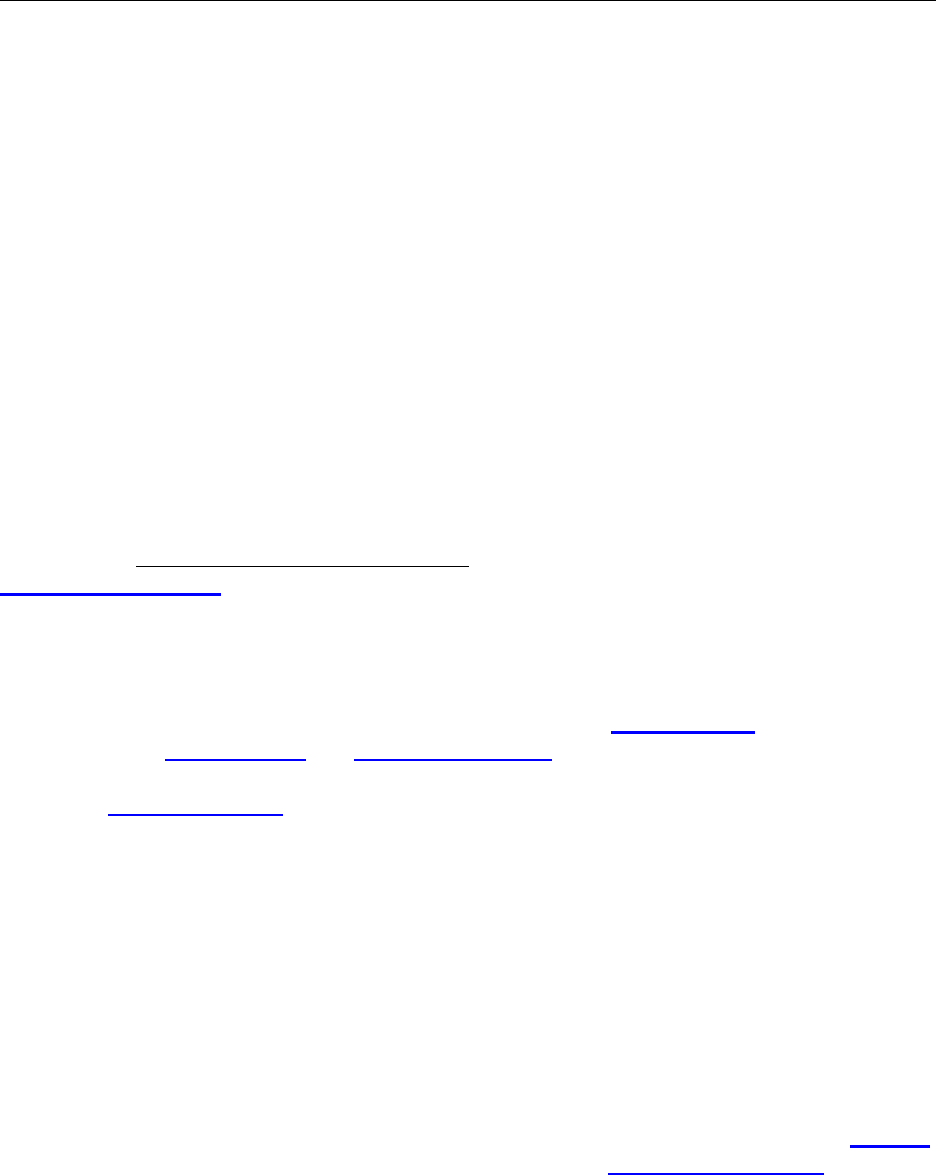
2BDoD 7000.14-R Financial Management Regulation Volume 10, Chapter 10
* July 2023
10-14
This may take place if the contract is undefinitized, whereby the contract terms, specifications, or
prices are not agreed upon before performance begins.
5.1.3. Contract financing payments do not include:
5.1.3.1. Invoice payments;
5.1.3.2. Payments for partial deliveries;
5.1.3.3. Lease and rental payments; or
5.1.3.4. Interim payments under a cost-reimbursement-type contract for services
when Alternate I of the clause at FAR 52.232-25 is used.
5.2 Progress Payments
Progress payments are made to the contractor when requested, as work advances.
5.2.1. Progress Payments Based on Costs. These payments, authorized by the inclusion of
FAR clause 52.232-16, are made to the contractor when requested, but not more frequently than
monthly and only in amounts approved by the ACO in accordance with FAR 32.5 and DFARS 232.5.
Progress payment requests are processed in sequential order.
* 5.2.1.1. Per FAR clause 52.232-16, the total amount of progress payments shall not
exceed 80 percent of the total contract price, as defined by FAR 32.501-3. Furthermore, in
accordance with FAR 32.501-1 and 10 U.S.C. § 3804(b), progress payments may not exceed 80
percent of the eligible costs of work accomplished on undefinitized contract actions (UCA), as
defined by DFARS 217.7401, and;
5.2.1.1.1. A contractor performing the contract for which a UCA is entered
into has not already received increased progress payments on contractual actions other than UCAs;
or
5.2.1.1.2. A contractor performing the contract for which a UCA is entered
into, and that has received increased progress payments on contractual actions other than UCAs,
can demonstrate that the contractor has promptly provided the amount of the increase to any
subcontractors (at any tier), small business concerns, or suppliers of the contractor.
5.2.1.2. Each contractor request for progress payment must be prepared and
submitted through the WAWF module of PIEE, as a separate progress payment document/SF 1443,
Contractor’s Request for Progress Payment, in accordance with DFARS 252.232-7003, with noted
limited exceptions. The FAR and DFARS links provided herein discuss the computation,
liquidation, reduction, suspension, and limitations of progress payments.

2BDoD 7000.14-R Financial Management Regulation Volume 10, Chapter 10
* July 2023
10-15
5.2.1.3. DFARS 252.232-7004 provides for special liquidation rates pertaining to
small businesses (90%) and small disadvantaged businesses (95%). However, the limitation/ceiling
of 80% of total contract price specified by FAR clause 52.232-16 still applies.
5.2.1.4. Progress payments may have different liquidation rates. For example, a
contract may have different liquidation rates for payments pertaining to the U.S. effort versus FMS.
In this example, the liquidation rate could be 80 percent for the U.S. work versus 90 percent for the
FMS, and two separate progress payment requests are required to be prepared and submitted by the
contractor. In addition, as prescribed by DFARS 252.232–7002, if more than one FMS country is
involved, the contractor is required to attach a supporting schedule to the progress payment request
identifying the countries and the requested distribution of the payment. Unless directed otherwise
in the contract, or by the contracting officer, the contractor submits the progress payment requests,
with supporting information, to the entitlement office designated in the contract when requesting a
progress payment.
5.2.1.5. FAR 32.102(b) states that progress payments based on costs do not include:
5.2.1.5.1. Payments based on the percentage or stage of completion when the
contract contains either FAR clause 52.232-5 or FAR clause 52.232-10;
5.2.1.5.2. Payments for partial deliveries accepted by the Government;
5.2.1.5.3. Partial payments for a contract termination proposal; or
5.2.1.5.4. Performance-based payments (FAR 32.10).
5.2.2. Progress Payments for Fixed-Price Construction Contracts. The Government may
make progress payments on fixed-price construction contracts containing FAR clause 52.232-5
based on estimates of work accomplished that meet the standards of quality established under the
contract. These progress payments, whether disbursed monthly or at more frequent intervals as
determined by the contracting officer, should be processed by the entitlement office as partial
payments as described in paragraph 3.1.
5.2.3. Progress Payments Based on a Percentage of Completion. FAR 32.102(e)(1)
references the statutory authority to use progress payments based on a percentage or stage of
completion. These are authorized only for contracts for construction (as defined in FAR 36.102),
shipbuilding and ship conversion, alteration, or repair. However, percentage or stage of
completion methods of measuring contractor performance may be used for performance-based
payments in accordance with FAR 32.10. Agency procedures must ensure that payments are
commensurate with work accomplished, which meets the quality standards established under the
contract.

2BDoD 7000.14-R Financial Management Regulation Volume 10, Chapter 10
* July 2023
10-16
5.2.4. Progress Payment Allocations to Accounting Classifications
5.2.4.1. DFARS PGI 204.7108 identifies the methodologies for allocation (payment
instructions) that contracting officers must include in contracts when financing payments are
authorized. The DFARS PGI provide instruction to the payment office to assign payments to the
ACRN citation(s). Refer to Volume 4, Chapter 12, paragraph 4.4, concerning the accounting
treatment of progress payments.
5.2.4.2. When allocating progress payments across ACRNs, controls must be
established to ensure disbursements do not exceed obligations at the ACRN level. In order to
incorporate these necessary controls, progress payments, performance-based payments, and
commercial item financing will ordinarily be charged to an ACRN so that the outstanding
financing payment balance for each ACRN does not exceed the Unliquidated Obligation (ULO)
for that ACRN multiplied by the contractual liquidation rate. This internal control ensures
contracts are not over liquidated at the ACRN level, potentially causing a negative ULO condition,
prior to final delivery. For ACRNs that fund both fixed-price and cost-type line items, the
allocation methodology of contract financing applies only to the fixed-price portions (in
accordance with FAR 32.501-3).
5.2.4.2.1. If the ACRN allocation instructions within the contract, based on
the incorporation of DFARS PGI payment instructions, deviates from the allocation process
described in 5.2.4.2, allocations in entitlement and accounting systems may be established to
reflect payment instructions that direct liquidation of contract finance payments from ACRNs with
a shorter remaining period of availability for expenditure. This may facilitate liquidation of
obligations pursuant to 31 U.S.C. § 1553 prior to closure of the appropriation account by operation
of 31 U.S.C. § 1552. If payment instructions direct liquidation of ACRN balances in excess of the
ULO balance multiplied by the contractual liquidation rate, controls must be established to ensure
that ACRNs with mixed-type funding (fixed and cost) are not over liquidated, and that the overall
contract ceiling of 80% of contract price (FAR clause 52.232-16) is not exceeded.
5.2.4.2.2. If the contracting officer determines an alternate ACRN
allocation methodology is to be used to liquidate payments for a specific contract, as described in
5.2.4.2.1, then the contracting officer must incorporate the DFARS PGI payment instruction of
“Other” (prescribed by DFARS PGI 204.7108(d)(12)) and negotiate a written agreement to such
an alternate methodology with the payment office before that alternate allocation methodology
may be used. A copy of the written agreement, or the contractual modification identifying the
specific payment instruction, must be maintained in the contract file and the payment office files
for audit support purposes.
5.2.4.3. There are occasions when work is shifted from one contract to another for
the same contractor. The shifting of work between contracts must be in compliance with DoD
progress payment policy of taking offsets whenever possible. When shifts occur, it is noted that a
disbursement adjustment between contracts is a bookkeeping entry and not a payment transaction.
Accordingly, when work is shifted between contracts of the same contractor, a progress payment is
the net amount of the transactions involved on the contracts. Any transfers of work from one contract
to another contract are ordered by a modification to each affected contract.

2BDoD 7000.14-R Financial Management Regulation Volume 10, Chapter 10
* July 2023
10-17
5.2.4.4. If the progress payment is for FMS requirements, then the portion of the
amount approved for payment is charged to each customer country. For the FMS customer to receive
a correct billing statement, the long line fund citation must include the country code, implementing
agency, country code designator, and the case line number. If each country code contains only one
ACRN, then payment is made to the ACRN representing the country code, implementing agency,
and case line item. If there is more than one ACRN for each country code, the amount charged to
each country code is prorated to the ACRNs identified to that country code, or allocated in a manner
identified by, or acceptable to, the ACO (in accordance with DFARS PGI 204.7108 and
DFARS 252.232-7002). Proration is based on the ratio of the ACRN obligation to the total
obligation for a particular country code.
5.2.5. Progress Payment Recoupment
Progress payments are recouped (liquidated) either by voucher deductions from
amounts otherwise due the contractor on payments for fixed-price delivered and accepted items,
or in extremely rare cases, by cash refunds. Recoupments must be based on the DFARS PGI
payment instruction requirements contained in the contract, as described in 5.2.4.1. If the contract
contains the FAR clause 52.232-16, progress payment financing shall be liquidated by deducting
from any payment under this contract, other than advance or progress payments, the unliquidated
progress payments, or 80 percent of the amount invoiced (or an alternate liquidation rate
established in accordance with FAR 32.503-9), whichever is less.
5.2.5.1. Deduction From Vouchers
5.2.5.1.1. Disbursement vouchers are prepared for the gross amount of work
completed by the contractor and charged to the applicable accounts, based on the contractual
payment instructions. From this gross amount, the deduction for the liquidation amount will occur
to recoup the prior progress payment financing.
5.2.5.1.2. The recouped amount is determined by multiplying the gross
amount of the invoice by the liquidation rate stated in the contract. If this amount is greater than the
outstanding progress payment balance on the contract, then the outstanding progress payment
balance becomes the amount recouped.
5.2.5.1.3. The recoupment is computed and applied, utilizing the DFARS
PGI payment instructions contained in the contract, against the outstanding progress payment
balances of the ACRNs to which the delivery is applicable.
5.2.5.1.4. If an insufficient outstanding balance of progress payments exists
on the ACRNs applicable to the delivered items, then any remaining outstanding progress payment
balance on other ACRNs must be recouped, up to the liquidation rate established in the contract,
which is ordinarily 80%.
5.2.5.1.4.1. If sufficient schedule information is available, then any
remaining recoupment is applied against the outstanding progress payment balance of the ACRN.
The recoupment is against the ACRN representing the delivery furthest into the future within the

2BDoD 7000.14-R Financial Management Regulation Volume 10, Chapter 10
* July 2023
10-18
same service as the deliverable ACRN. If sufficient liquidation is not available within the deliverable
service ACRN, then liquidation from the ACRNs of other services should occur against the delivery
furthest into the future.
5.2.5.1.4.2. If sufficient schedule information is not available, then
the remaining liquidation is prorated against those ACRNs with an outstanding progress payment
balance within the service of the deliverable first, and then from other service ACRNs when
necessary. The basis for the proration is the ratio of the individual ACRN progress payment balances
to the total contract progress payment balance.
5.2.5.1.5. Recoupments are not accomplished involving both U.S. and FMS
funds unless both are involved with the payment of the deliverable item. If there is a deliverable
payment against U.S.-funded ACRNs, then progress payments are recouped only against the U.S.
ACRNs. For a deliverable payment against FMS-funded ACRNs, progress payments are recouped
against only those countries involved with the FMS deliverable.
5.2.5.1.6. For invoices offering discounts on contracts with unrecouped
(unliquidated) progress payments, see Chapter 2.
5.2.5.2. Cash Repayment. Cash repayments may be required by the provisions of
the contract.
5.3 Performance-Based Payments
As prescribed by FAR 32.10, performance-based payments are a form of contract financing
that is authorized for use by the inclusion of FAR clause 52.232-32 in solicitations that may result
in contracts providing for performance-based payments, and fixed-price contracts under which the
Government will provide performance-based payments. Performance-based payments and
progress payment financing may not be authorized on the same contract, or individual order (for
indefinite delivery contracts), per FAR 32.1003.
5.3.1. Payment. Performance-based payment financing differs from progress payments,
which are based on costs incurred, in that they are based on objective quantifiable performance,
the accomplishment of defined events, or some other quantifiable method. Two different types of
performance-based payments may be included in a contract. The inclusion of
DFARS clause 252.232-7012 authorizes performance-based financing payments on a whole
contract basis, whereas DFARS clause 252.232-7013 authorizes the payments on a deliverable
line-item basis. As prescribed by FAR 32.1004(b)(2)(ii), total performance-based payments shall
not exceed 90 percent of the contract price if on a whole contract basis, or 90 percent of the delivery
item price if on a delivery item basis.
5.3.2. Recoupment. Performance-based financing payment amounts shall be recouped
(liquidated) by deducting a percentage, or a designated dollar amount, from the delivery payments
in accordance with FAR clause 52.232-32. The contracting officer must specify the liquidation
rate or designated dollar amounts in the contract. The method of liquidation must ensure complete
recoupment no later than final payment. As prescribed by FAR 32.1004, the methodology for
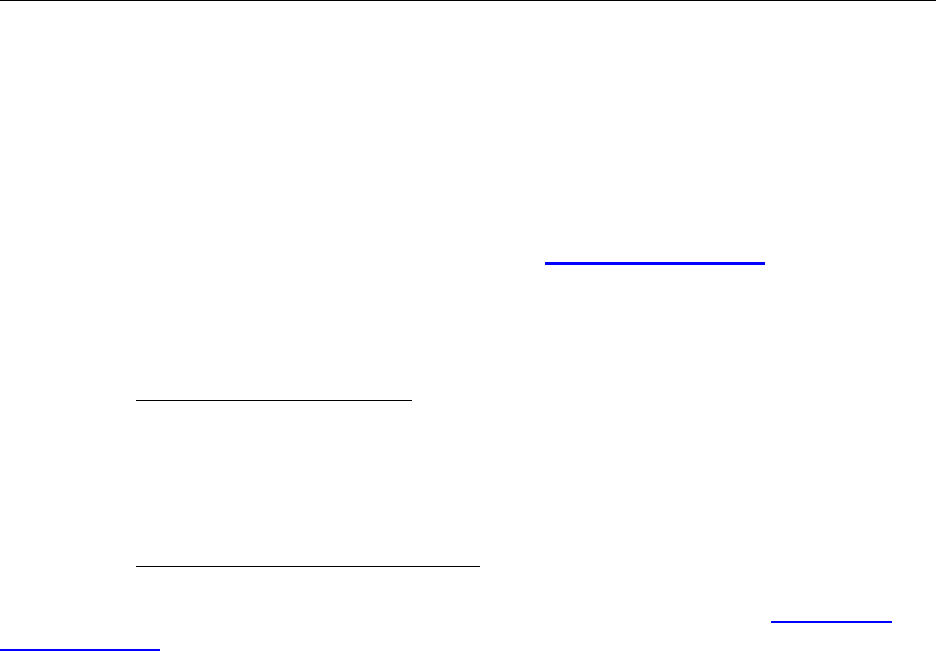
2BDoD 7000.14-R Financial Management Regulation Volume 10, Chapter 10
* July 2023
10-19
liquidating performance-based financing payments must be stated in the contract and will be on
the same basis as they were paid, whole contract basis or line item basis.
5.4 Advance Payments for Non-commercial Items
Advances are payments made to contractors in anticipation of performance on the contract.
Advances are often made prior to the associated costs being accumulated and summarized in the
contractor’s accounting system. Contracts must include FAR clause 52.232-12 authorizing these
payments before payment may be made. In accordance with FAR clause 52.232-12, these payments
will be made payable to the contractor marked for deposit only in the contractor’s special bank
account designated for this purpose. For more details, see FAR 32.4, DFARS 232.4, and Chapter 4.
5.4.1. Reconciliation and Tracking. Subsidiary records of individual advances must be
maintained to support the amount recorded in the general ledger account. The subsidiary record
must include the amount advanced, the date advanced, the applicable contract number, and the
disposition of the advance. At least quarterly, the subsidiary record must be reconciled with the
general ledger balance; see Volume 4, Chapter 3.
5.4.2. Advance Payment Pool Agreements. Advance payments may be used for financing
the performance of more than one contract. This is accomplished under a single advance payment
agreement called an advance payment pool agreement, under the authority of FAR 32.408 and
DFARS 232.470.
5.4.2.1. Advance payment pool agreements are used for the financing of cost-type
contracts with nonprofit educational or research institutions, for experimental or research and
developmental work, when several contracts or a series of contracts require financing by advance
payments. The educational institution uses the advance to pay expenses that will be reimbursed
under performance of the contracts. The advance remains outstanding as long as there are contracts
remaining in the pool, the need for the amount exists, and there is contract value (unliquidated value
on the contract) greater than the amount of the advance.
5.4.2.2. Contracts may cite the funds of more than one agency or department when
the contract is part of a pooling agreement. When more than one contract is involved in the pooling
agreement, one or more of the contracts is designated as the contract for which the advance payments
are applied. This is usually a large dollar value contract.
5.4.2.3. The following policies apply to DoD Components operating under advance
payment pool agreements.
5.4.2.3.1. The contractor request for an advance payment must be submitted
to, approved, and certified for payment by the office(s) specified in the contract. The advance
payment must cite a specific appropriation associated with the advance payment pool agreement.
The approved payment request is then forwarded to the payment/entitlement office cited in the
contract to be paid.

2BDoD 7000.14-R Financial Management Regulation Volume 10, Chapter 10
* July 2023
10-20
5.4.2.3.2. Upon receipt of a properly approved advance payment voucher in
the entitlement office, it must be reviewed for accuracy. If proper, the voucher is entitled and
forwarded to the disbursing office to be paid.
5.4.2.3.2.1. The payment must cite the appropriations identified on
the contracts listed on the reimbursement voucher.
5.4.2.3.2.2. A record must be maintained of all contract financing
payments made by the entitlement office.
5.4.2.3.2.3. Total payments must not exceed the total amount
authorized on the contract.
5.4.2.3.2.4. Payments are to be made within 5 to 10 workdays after
receipt of a properly approved reimbursement voucher, but not earlier than the date specified in the
pool agreement. These payments are considered a form of contract financing and are not subject to
Prompt Payment Act (PPA) interest.
5.4.2.4. Controls must be established (e.g., manual or electronic ledgers) by the
payment office to ensure cumulative payments, plus the amount advanced, do not exceed the ULO
of all contracts awarded under the pooling agreement. This condition may result from:
5.4.2.4.1. Failure to receive obligating documents, or
5.4.2.4.2. Nearing completion of the pool contracts.
5.4.2.5. Do not make a (non-advance) contract payment when it causes the ULO to
fall below the advanced amount. If this condition occurs, notify the designated DoD Component
and request further instructions. The Component will advise whether obligating documents are in
transit or whether the payment must be processed to liquidate the amount advanced.
5.4.3. Recoupment of Advance Payments
The methodology for recoupment of advance payments should be stated in the
contract. In accordance with FAR clause 52.232-12, at any time, the contractor may repay all or
any part of the funds advanced by the Government. Whenever requested in writing to do so by
the administering office, the contractor must repay to the Government any part of unliquidated
advance payments considered by the administering office to exceed the contractor’s current
requirements. If the contractor fails to repay the amount requested by the administering office, all
or any part of the unliquidated advance payments may be withdrawn from the special account
established for deposit of the advanced payments, by check signed by only the countersigning
agent and applied to reduce the unliquidated advance payments under this contract. If the agency
considers a more rapid liquidation appropriate, the contracting officer may use the clause with its
Alternate III.

2BDoD 7000.14-R Financial Management Regulation Volume 10, Chapter 10
* July 2023
10-21
5.4.3.1. When the advance is recouped, or repaid by the contractor, charge the
appropriate contracts in the pooling agreement and reduce the amount recorded against the
designated contract as advance payments.
5.4.3.2. When a contract is terminated, the disbursing office will collect any balances
due for advance payments not liquidated, as well as accrued interest if applicable (see FAR 32.407).
6.0 COST-REIMBURSEMENT-TYPE CONTRACTS
Cost-reimbursement-type contracts provide for payment of allowable costs incurred, to the
extent prescribed in the contract. These contracts establish an estimate of the total cost for
purposes of obligating funds, and contain a cost limitation that the contractor may not exceed
(except at its own risk) without the approval of the contracting officer (See FAR 16.3). Interim
payments under a cost-reimbursable-type contract are considered contract financing and are
governed by the requirements of FAR, Part 32, except for cost-reimbursement contracts for
services, when Alternate I of the clause at FAR 52.232-25 is used.
6.1 Recording of Payments
The general ledger posting requirements for those interim cost-reimbursement payments that
are considered contract financing are contained in Volume 4, Chapter 5.
6.2 Authority to Review and Approve Vouchers
The Defense Contract Audit Agency (DCAA) has sole authority for verifying claimed costs
and provisionally approving interim payment requests under cost-reimbursement, non-commercial
and commercial time-and-materials, and labor-hour type contracts. This authority may include, upon
request, cost verification and provisional approval for state and local government-submitted claims
that fall under the provisions contained in the Office of Management and Budget Circular A-87.
In accordance with DFARS 242.803, DCAA utilizes sampling methodologies to select interim
vouchers for review prior to sending them to the payment office. Interim vouchers not selected
for pre-payment review will be considered to be provisionally approved and will be sent directly
to the payment office. All provisionally approved interim vouchers are subject to later audit of
actual costs incurred. A Contracting Officer’s Representative (COR) may not be delegated authority
to approve these types of payments. The COR may review contractor billings, but is expected to
coordinate with DCAA when any cost verification of data is necessary for support of their
surveillance responsibilities. Therefore, DCAA provisionally approves interim payment requests
subject to final audit, the ACO approves the final payment request on the contract, and the COR
coordinates with DCAA if any cost verification is needed.
6.3 Invoice Submission
Contractors must submit payment requests and receiving reports in electronic form, utilizing
the WAWF module of PIEE, as prescribed by DFARS 232.7002 and DFARS 232.7003, with noted
limited exceptions. When payment requests and receiving reports are not required to be submitted

2BDoD 7000.14-R Financial Management Regulation Volume 10, Chapter 10
* July 2023
10-22
in electronic form, the contracting officer will consult with the payment office and the ACO
regarding the preferred method for submitting payment requests.
6.4 Special Provisions for Foreign Military Sales (FMS) - Funded Contracts
Special payment techniques are required in some cases when the contract includes
requirements under the FMS program for more than one country, or one or more countries and the
United States. Further policy regarding FMS-funded contracts is contained in Volume 15.
7.0 FAST PAYMENT
The fast payment policies authorize payment prior to verification that supplies have been
received and accepted on contracts containing FAR clause 52.213-1, under the limited conditions
listed in FAR 13.402 and DFARS 213.402. When a purchase is made using fast payment
procedures, payment is made based on the supplier's submission of an invoice, which constitutes
a certification that the contractor has delivered the supplies to a post office, common carrier, or
point of first receipt by the Government, and that it will repair, replace, or correct non-conforming
items. Contractors must submit payment requests in electronic form, utilizing the WAWF module
of PIEE, as prescribed by DFARS 232.7002 and DFARS 232.7003, with noted limited exceptions
(see Chapter 8 for additional policy regarding electronic submission requirements).
7.1 Payment Timelines and Requirements
Payment is to be made no later than 15 days after receipt of a proper fast pay invoice.
However, if the payment office does not meet the 15-day requirement for payment, PPA interest
will begin to accrue in accordance with procedures applicable to invoices to which the fast payment
procedure clause does not apply. See Chapter 7 for additional PPA policy and requirements.
7.1.1. Both manual and electronic invoices will be prominently marked as “FAST PAY”
and processed using fast payment procedures. Invoices not prominently marked “FAST PAY”
may be accepted for payment. If the contract contains FAR Clause 52.213-1, then the invoice may
be paid using fast payment procedures.
7.1.2. If the fast payment procedure clause is not incorporated into the contract, the invoice
will be paid in accordance with the procedures for invoices to which fast payment procedures do
not apply. The contracting officer should be provided timely feedback concerning contractor
performance (including deficiencies and any history of abuse) under fast payment purchases.
7.2 Controls
The entitlement office, together with the contracting officer, must ensure the following
conditions are in place when using the fast payment procedures.
7.2.1. A closed loop process exists that matches payments to material receipts and resolves
non-receipt or other discrepancies. This should consist of a management control/audit program by
the entitlement office for the post-payment examination of payments made under fast pay.

2BDoD 7000.14-R Financial Management Regulation Volume 10, Chapter 10
* July 2023
10-23
7.2.1.1. Authorized personnel with direct knowledge of the receipt must document
receipt of goods and services. This documentation, whether hardcopy or systemic, must be made
available within the timeframe prescribed by a post-payment examiner when requested during
audits. The audit must confirm receipt and acceptance and include matching with payment
documents.
7.2.1.2. The first attempt to obtain missing receiving reports will be initiated no
later than 45 days after payment is made. If the receiving report is not received within 45 days
from the date of the initial follow-up, the entitlement office will contact the contracting officer to
verify receipt and acceptance; or issue a contract deficiency report to the contracting officer for
non-compliance with contract terms so the entitlement office and the contracting officer can start
collection actions.
7.2.2. Auditable evidence of receipt and acceptance of the goods/services exists and is
accessible. Audit evidence of receipt must have the date the items were delivered or when the
services were rendered, the printed authorizing official’s name, and authorizing signature or
electronic/digital approval. Audit evidence of acceptance is the authorization that the receipt of
goods/services matches the criteria identified on the originating order and acknowledges the
items/services are of acceptable condition/quality.
7.2.3. An information flow exists that links consignee (the post office, common carrier, or
point of first receipt by the Government) receipt and discrepancy information to both the
purchasing and bill entitlement offices. The information flow documents contractor performance
and provides timely feedback to contracting/bill entitlement offices.
7.2.4. A prevalidation process exists that matches expenditures and obligations for fast
pay transactions (See Chapter 1 for additional information on prevalidation requirements).
